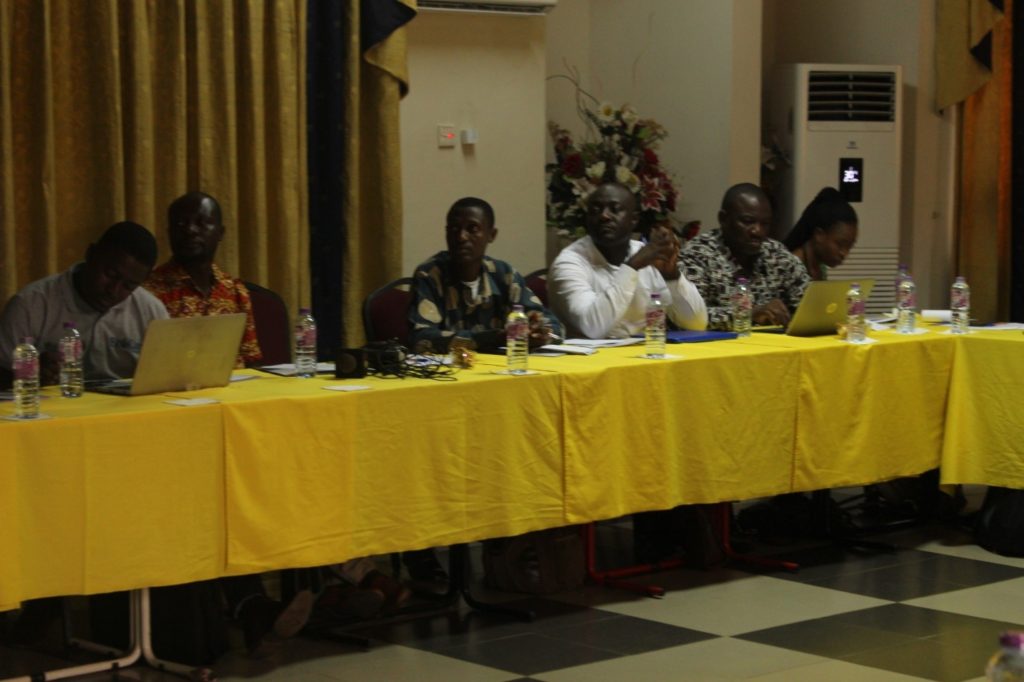Illegal cocoa farms cause of 700% increase in deforestation – Survey
A study conducted by Tropenbos Ghana, a forest and trees focused organization has revealed that there are illegal cocoa farms in the three Forest Reserves (FRs) in the country that have increased the rate of deforestation by 700% within a 20-year period.
The three FR’s, Krokosua Hills, Sui River and Tano Offin- Forest reserves, have suffered deforestation at that alarming rate since 2001.
Dr Lawrence Kwabena Brobbey a KNUST researcher and PhD. Candidate made this known at a validation workshop organised by Tropenbos Ghana as an excerpt from a study he conducted with colleague Dr Frank Kwakye Agyei,
Dr Brobbey, in the presentation, submitted that, “admitted farms and villages have extended in size by an average of 15, 000% from the time of reservation to 2019. Two admitted farms have turned into a community in Sui River Forest reserve.”
According to him, “the population growth with its attendant need for the cocoa and other food crops for subsistence and cash income is the major driver of deforestation in the three forest reserves.”
“Low cocoa productivity resulting from ageing trees, destruction of trees by the swollen shoot virus disease and wilting of trees from the high sun intensity motivate farmers to increase yield by clearing more forest,” he added.
Forces behind deforestation
Touching on the underlying forces besides cocoa which led to deforestation in the country, he said, “lack of enforcement of forest laws, broken boundary pillars and absence of clearly demarcated boundaries between forests and admitted farms form part of the factors.”
He added that the “influence of chiefs, politicians and other elites to prevent the Forestry Commission from destroying illegal farms in FRs, perception by indigenes that they have inalienable rights to forest lands and land insecurity on the part of migrants are some of the forces behind deforestation.”
Dr Brobbey explained further that population growth and limited alternatives livelihood in admitted settlements and communities fringing FRs and low cocoa productivity that encourages farmers to seek new lands in FRs to cultivate cocoa were other forces

He mentioned the rest of the forces as “area of land put under reservation leave local communities with inadequate cultivatable land, inadequate logistic to monitor illegal forest activities and lack of coordination among relevant statutory institutions.”
Recommendation
As part of their recommendations, they proposed the enforcement of forest laws and multi-stakeholder dialogue process to find solution to expansion of admitted communities and settlements.
They also called for boundary demarcation of admitted farms, training of farmers in land intensification, awareness creation on consequences of deforestation and provision of alternative livelihoods.
Conclusion and implementation of ongoing land and tree tenure reforms
He called for the revision of a decision to give 25 years’ period of grace for illegal cocoa farms in degraded FRs and that civil society organisations (CSOs) could lead the campaign for increase in price and also monitor to ensure that the increase trickled down to intended beneficiaries.
He said those spearheading existing and emerging interventions that aim at addressing cocoa-led deforestation can learn useful lessons from the success and challenges of the FLEGT-VPA.
Action to prevent further cocoa deforestation
Touching on preventive factors, he said “Ghana Cocoa forest REDD+ programme was aimed to significantly reduce the emission from deforestation and forest degradation by promoting climate smart cocoa production, landscape level land-use planning strategic policy reforms, integrated coordination and monitoring, law enforcement as well as risk efforts within priority HIA landscape.
On cocoa and forest initiative, he said “the aim is to end deforestation and promote forest restoration and protection in the cocoa value chain and others include full sun to shaded cocoa agro-forestry systems; mainstreaming climate smart agricultural practices in cocoa production in Ghana, and Climate Cocoa partnership for REDD+ preparation.”
‘Our priority is to protect forests’
Mrs Mercy Owusu Anash, Director of Tropenbos, told the DAILY HERITAGE in an interview that, “Our priority is to protect forests, so that we can get high yields,” because according to research, “cocoa strive well in areas where there is shade.”
She said, “If we get lots of forests, then we will be able to increase cocoa production and yield. We cannot be destroying our forest for cocoa, but probably in the future, we are not going to get the yield that we are expecting to get.
“Our priority is both integration between forest and cocoa. I am very happy that the President has launched the Ghana Cocoa Redevelopment program. That program is about our forest and cocoa integration so that we get our high yields and at the same time to protect our forest.
“What we want to bring with our presentation of the results from our study is that there are very critical issues that we need to address. We want to maintain our forest and at the same time, we want to increase yields of cocoa, because we realised that our forests are being enclosed for pawpaw. Unfortunately, we are likely to lose a lot of our forests if we do not take actions now, that is why we did this study to inform us that increasingly there a form of encroachment of forest reserves and people are using these encroached areas to grow papaw that is why we did the study to bring out the need to preserve our forests,” Mrs Owusu Ansah said.



